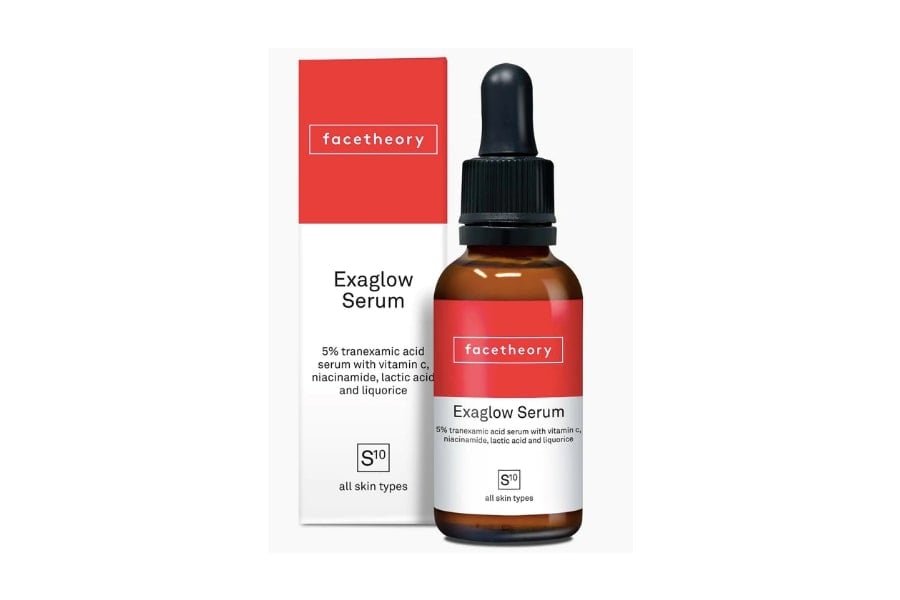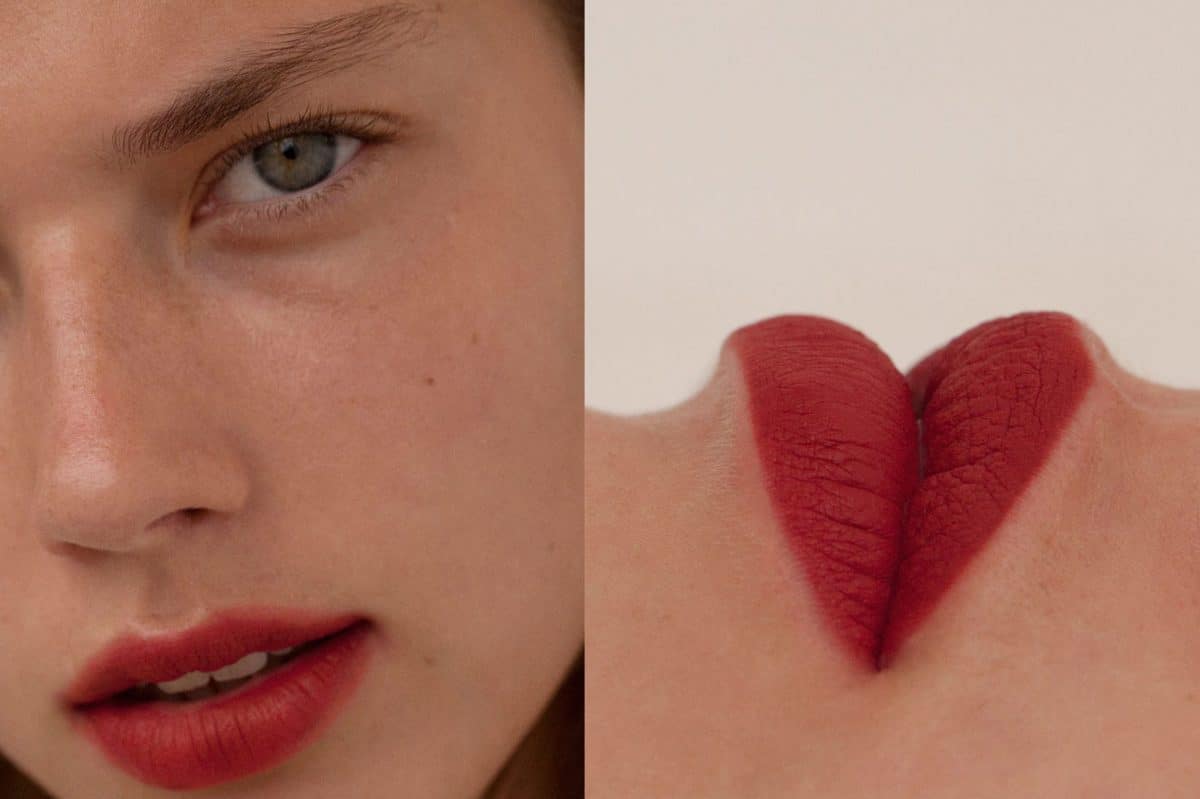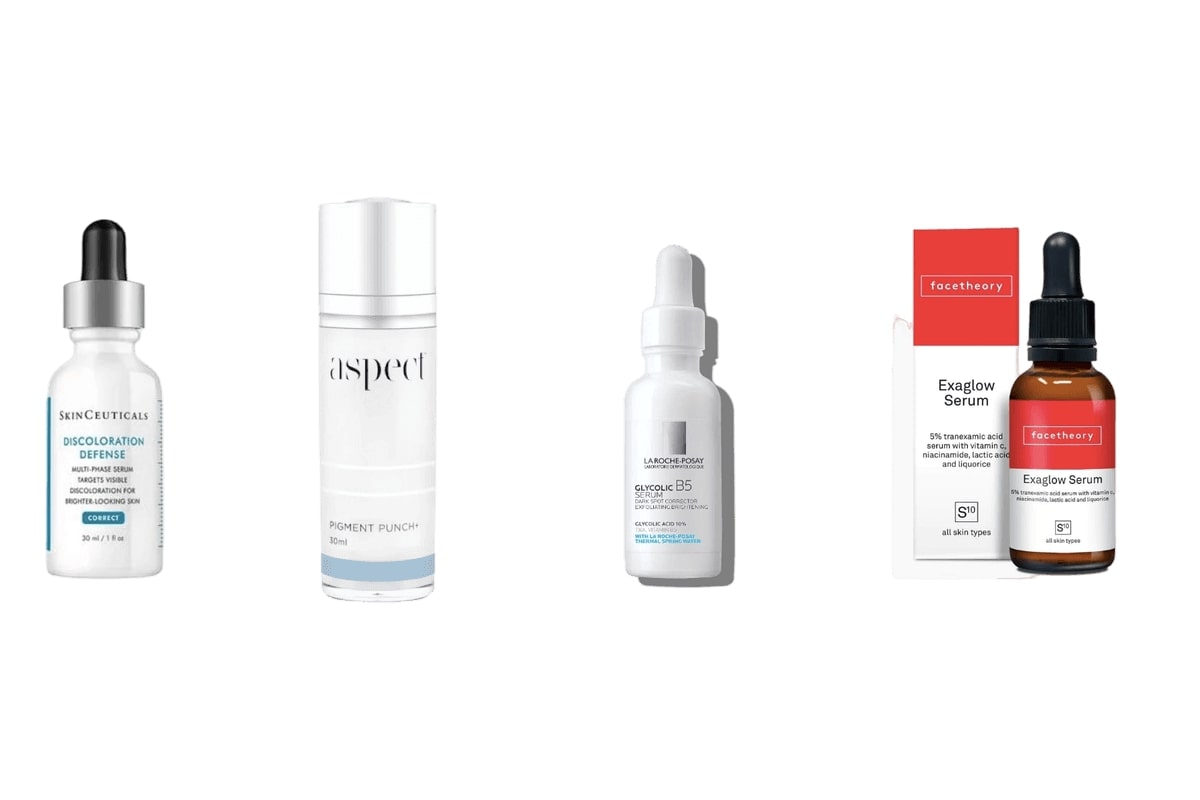
There's a new ingredient piquing the interest of skin care junkies across the globe, yet it has roots that span decades past. Meet tranexamic acid, the latest in alleviating hyperpigmentation and aiding in overall brightness.
Tranexamic acid had typically been used in oral form to treat or halt major loss of blood in both trauma settings and general surgery. However, in 1979 a medical professional accidentally found the acid is beneficial to brightening the skin and alleviating pigmentation. Thus, the ingredient has been co-opted in topical form as a beauty tool subtly being refined throughout the last forty years. Tranexamic acid (TXA) skin care is on the rise, with may companies releasing products with it included in their ingredient listing, but how does it work and is it safe for all? We break down the fundamentals and how it can be added into your skin care routine.
What is tranexamic acid and how does it benefit the skin?
Tranexamic acid helps to reduce the appearance of hyperpigmentation, through lightening dark spots on the epidermis. A synthetic derivative of lysine – an amino acid – the ingredient is known for its ability to brighten skin complexion and improve the appearance of skin discolouration.
TXA blocks melanin production, which is oftentimes the underlying cause of skin discolouration. At its most raw, it can be likened to an anti-inflammatory and through halting prostaglandins and arachidonic acid, which are involved in driving the melanogenesis enzyme activity that can produce dark spots.
TXA targets a range of skin discolourations, including:
- Melasma
- Hyperpigmentation
- Acne scarring
- Red spots
- Dark spots
Is TXA an exfoliant product?
Unlike many acids, including lactic and salicylic, TXA isn’t an exfoliant and is less irritating than most dark spot-removing ingredients. Unlike hydroquinone, it doesn’t come with the risk of ‘paradoxical pigmentation’ and through its anti-inflammatory properties, it should be suitable for most skin types.
Can anyone use tranexamic acid?
As with all active ingredients employed in skin care, it is best practice to patch test first before lathering across your face. This is especially true for those with eczema or sensitive skin.
On occasion, and dependent on skin type, TXA can cause dryness, peeling and irritation. When mixing too many acids together – like AHA’s, BHA’s, etc. – you can cause a reaction which may lead to a breakout. With this in mind, take care with how you are mixing and matching your skin care.
How can I incorporate it into my beauty routine?
TXA is best included in your skin care routine through serums, face masks and peels with the ingredient as part of its formulation. Remember to always follow your serums with a moisturiser rather than the other way round to ensure you are applying your skin care in the correct order.
TXA pairs well with skin brightening and protecting tools, like vitamin C, kojic acid and SPF which is the best protector from discolouration and premature signs of ageing.
Concentrations between 3 per cent and 5 per cent have been studied in depth, so it is recommended to purchase a version of the product with this concentration in mind. If there is no reaction from a patch test, start by applying TXA once a day and gradually work up to twice in both the morning and evening.
La Roche-Posay Glycolic B5 Serum
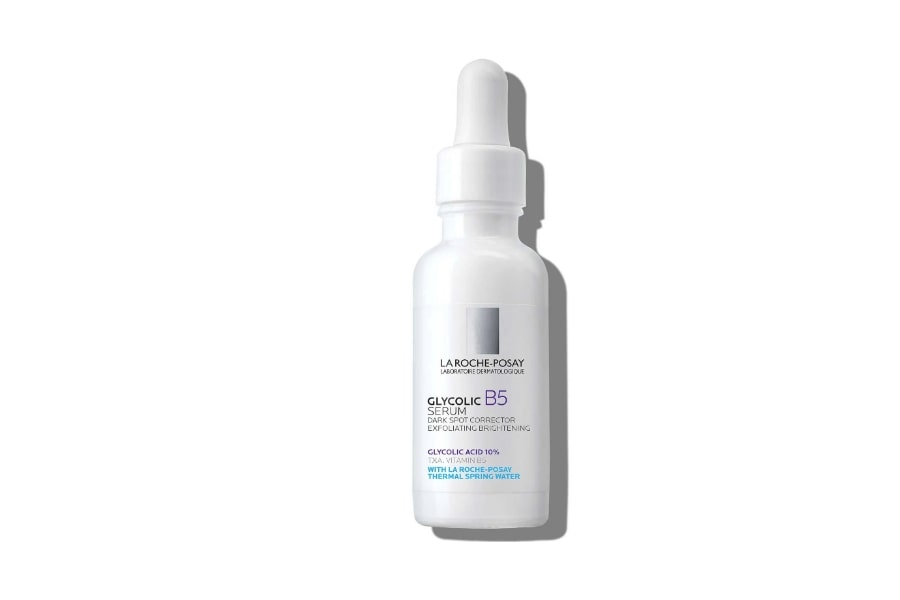
Skin Ceuticals Discolouration Defence
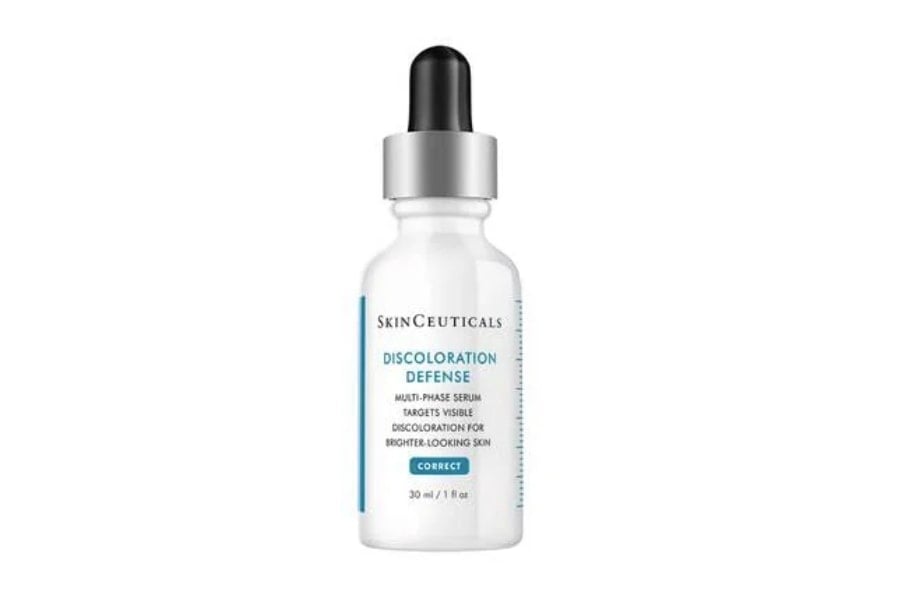
Aspect Pigment Punch+

Face Theory Extra Glow Serum
